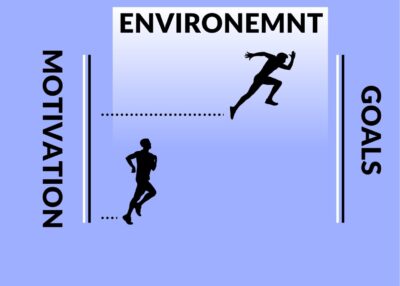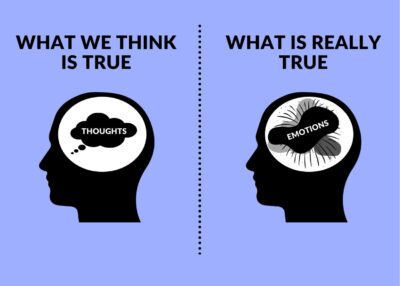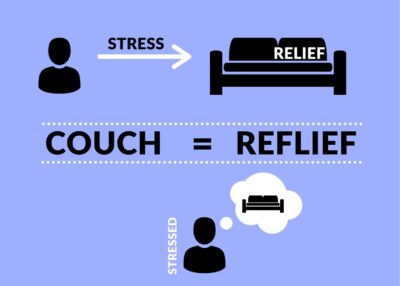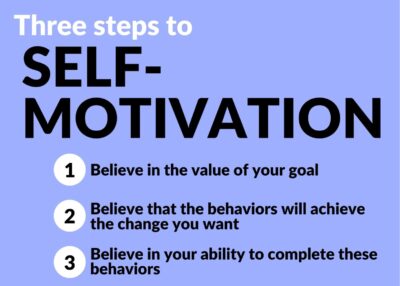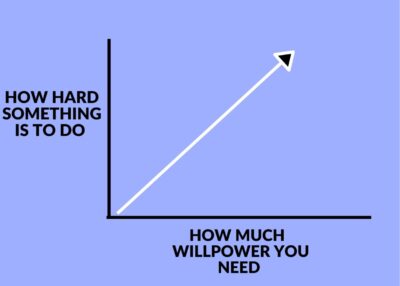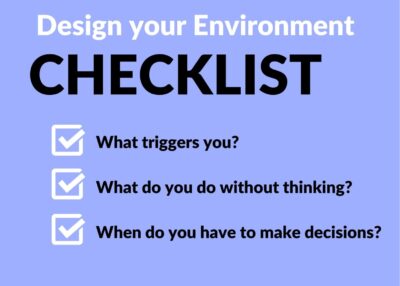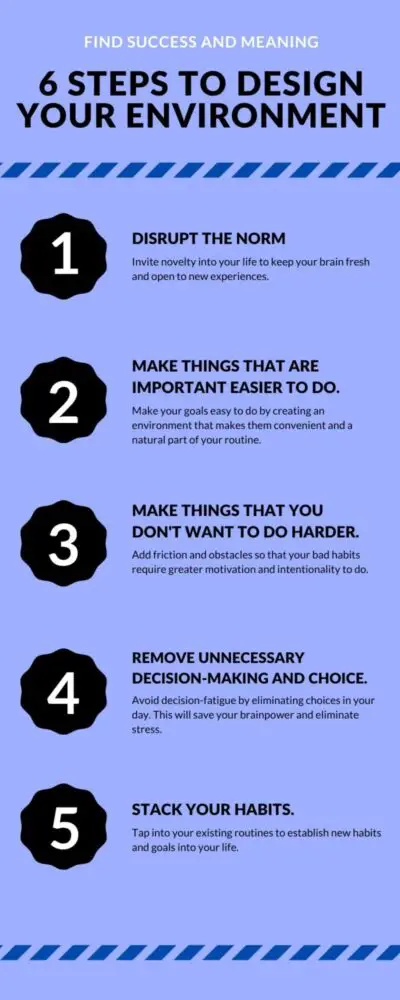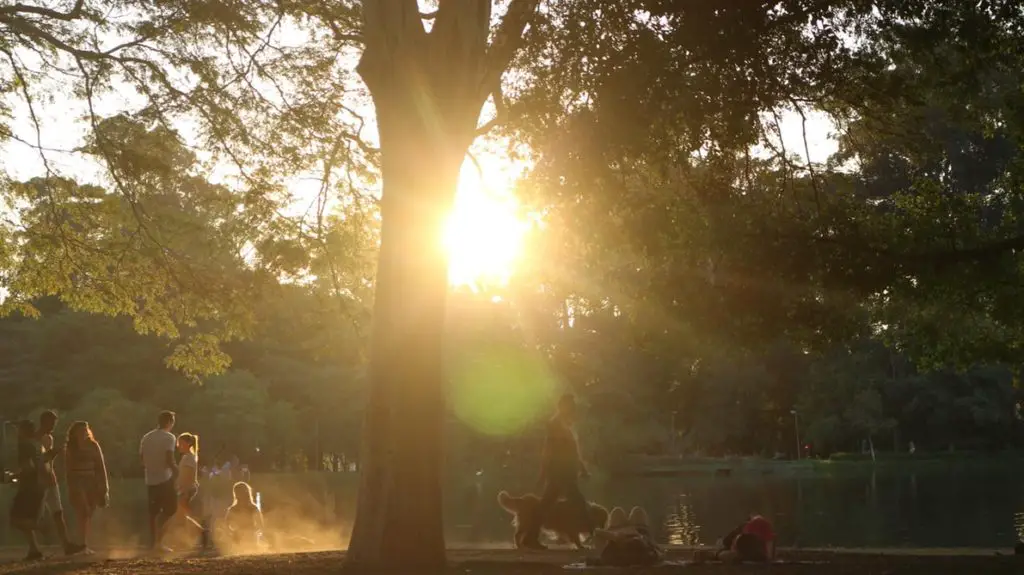[fusion_builder_container hundred_percent=”no” hundred_percent_height=”no” hundred_percent_height_scroll=”no” hundred_percent_height_center_content=”yes” equal_height_columns=”no” hide_on_mobile=”small-visibility,medium-visibility,large-visibility” status=”published” class=”@media only screen and ( min-width: 800px ) {padding-top: 0px; padding-right: 5px; padding-bottom: 0px; padding-left: 5px; }” background_position=”center center” background_repeat=”no-repeat” fade=”no” background_parallax=”none” enable_mobile=”no” parallax_speed=”0.3″ video_aspect_ratio=”16:9″ video_loop=”yes” video_mute=”yes” border_style=”solid” padding_right=”%” padding_left=”7%” admin_label=”Large Screen text” flex_column_spacing=”0px” type=”legacy”][fusion_builder_row][fusion_builder_column type=”1_1″ layout=”1_1″ spacing=”” center_content=”no” link=”” target=”_self” min_height=”” hide_on_mobile=”small-visibility,medium-visibility,large-visibility” class=”” id=”” background_color=”” background_image=”” background_image_id=”” background_position=”left top” background_repeat=”no-repeat” hover_type=”none” border_color=”” border_style=”solid” border_position=”all” border_radius=”” box_shadow=”no” dimension_box_shadow=”” box_shadow_blur=”0″ box_shadow_spread=”0″ box_shadow_color=”” box_shadow_style=”” padding_top=”” padding_right=”” padding_bottom=”” padding_left=”0px” margin_top=”” margin_bottom=”” animation_type=”” animation_direction=”left” animation_speed=”0.3″ animation_offset=”” last=”true” first=”true” border_sizes_top=”0px” border_sizes_bottom=”0px” border_sizes_left=”0px” border_sizes_right=”0px” type=”1_1″][fusion_text columns=”” column_min_width=”” column_spacing=”” rule_style=”default” rule_size=”” rule_color=”” hide_on_mobile=”small-visibility,medium-visibility,large-visibility” class=”” id=”” animation_type=”” animation_direction=”left” animation_speed=”0.3″ animation_offset=””]
[/fusion_text][fusion_text columns=”” column_min_width=”” column_spacing=”” rule_style=”default” rule_size=”” rule_color=”” content_alignment_medium=”” content_alignment_small=”” content_alignment=”” hide_on_mobile=”small-visibility,medium-visibility,large-visibility” sticky_display=”normal,sticky” class=”” id=”” font_size=”” fusion_font_family_text_font=”” fusion_font_variant_text_font=”” line_height=”” letter_spacing=”” text_color=”” animation_type=”” animation_direction=”left” animation_speed=”0.3″ animation_offset=””]
Design Your Environment for Success
Jimmy and Bobby both had the same goal: to kick their bad habits and create a more meaningful life. Both guys received a list of actionable advice that would help them achieve their goals. (You know, stuff like exercising, connecting with friends, journaling – finding self-worth and all that good stuff.)
They also both underwent a series of self-awareness activities, because these wise guys knew that being self-aware is a huge predictor of success and life happiness. (Maybe they learned it from this blog, who knows.) While they were far from perfect, Jimmy and Bobby could identify their strengths and weaknesses; this knowledge prepared them for the challenge that lay ahead.
With equal motivation, willpower, and self-awareness, Jimmy and Bobby set off on their self-growth journey. Their lives filled with new habits and focuses.
But as the weeks progressed, Bobby started to slip up. He skipped a day of journaling, and another, and another. Over time, his newly purchased gym card began to collect dust in the corner. As for his friends – well, Netflix was loyal, right?
Jimmy, on the other hand, prevailed in his new habits. Not only did he journal every day, but he began to look forward to it. His exercise routine had him feeling good, and his relationships had never been stronger.
If they had the same motivation and willpower, how did their results differ so drastically? What was Jimmy’s secret?
Turns out, Jimmy didn’t have a secret. It actually didn’t have anything to do with Jimmy as a person. Not directly, anyway.
It had everything to do with his environment. And unlike Bobby, Jimmy just had the foresight to utilize it more strategically.
.
Humans Are Less in Control than We Think
Most of us think our decisions and actions determine our success. Our culture echoes this notion of self-agency. If we want something, we just need the motivation and willpower to go get it.
This drastically overinflates our own abilities (a tendency we humans do quite often). We like to think we’re more in control than we actually are. Even the lowest-esteemed among us still have a bias to think that they’re in charge. (Which is why they often feel so guilty for not being successful.)
The focus on willpower also drastically neglects a critical premise: humans are ruled by our emotions and environments much more than we give them credit.
We like to think our thoughts control our behaviors. The truth is, our emotional brain – which is at the base of our spinal cord – controls our behaviors. And so lucky for us, it’s not always rational. Instead, a desire for pleasure, an avoidance of pain, and a heightened sense of fear run our actions.
These three elements served us well in the prehistoric days. Unfortunately, they don’t work to our advantage in the modern world. Especially when it comes to delayed gratification and forming new habits.
.
Humans are Extremely Reactive to Our Environment
Our emotional memories hold a lot of power over us. These memories are formed by experiences, often without our awareness.
A simple example is when you touch something hot. You accidentally touch a stove. Ow, this stove hurts my hand! And then you learn not to touch a hot stove.
This process gets more complicated when your experiences become habitualized.
For example, after a long day, you come home and lie down on the couch. It gives you a moment of relief. The next day, you do it again. By the end of the week, your body has associated *couch* with *stress relief*.
Nothing is inherently wrong with this association. The problem, however, comes when we begin to lose self-awareness of our triggered behaviors. Because our emotions (and a slew of other brain biases) rule our behaviors, we often act without conscious thought.
After a while, your body will seek *couch* when it feels stress – even if it’s not the best option for you in the long run (or, in many cases, the short term).
Our bodies respond to something in our environment based on emotional memories. Each time we repeat the behavior, it becomes more ingrained in our brain. Eventually, the behavior establishes itself as a comfortable, predictable action-consequence routine.
And if there’s anything we humans love, it’s predictability. (So much so that we will choose worse options for ourselves merely because we know what it’s like.)
.
How Designing Your Environment for Success Affects Your Goals and Motivation
The common misconception about motivation is that willpower and wanting something is enough to achieve results. For some people, in some situations, it is.
But for most people, in most situations, it’s not. This failure of willpower is because of all the emotional-response-behavior-triggered-routine-evolutionary-emotional-response stuff I described above. (Did I just say emotional response twice? I think I did)
You can read my longer article on motivation, inspired by Dr. Benjamin Hardy’s book Willpower Doesn’t Work, but the important thing to know is that motivation requires three elements:
- How much value you put into your goal
- How much you believe the behaviors will help you achieve your goal
- How much you believe in yourself to follow through with your behaviors
You need all three to be motivated. And then, when you have all three, you need to design your environment for success.
Designing your environment for success is where you should put your willpower and motivation.
I love hiking, but my fiancé needs more convincing. That means that, if I do persuade him to go, I feel a lot of pressure to make it a pleasant experience. I want him to create a positive emotional memory; ideally, this will make him want to hike more.
If he’s hangry or bug-bitten, it won’t be pleasant for him. (And, by association, it won’t be pleasant for me). I will have to work harder to try to convince him to go with me.
So I’ve learned to bring snacks and bug spray on every hike. Rather than wasting my energy convincing him “how incredibly fun hiking is!” I set up an environment that makes it fun (or less unpleasant) than it could be.
If he has a positive experience, he’ll be more likely to hike with me in the future.
The same logic applies to our personal goals.
If you have a positive experience, or a less strenuous experience, you’ll be more likely to do something again. No matter how many thoughts we have, our emotional responses are triggered by our environment.
The harder things are to do, the more willpower that will be required to do them. Ultimately, this will drain you of your motivation and energy.
Let’s get back to our initial story with Bobby and Jimmy. Bobby simply tried to insert his new habits into his existing routine. He planned to wake up ten minutes earlier to journal, go to the gym after dinner, and socialize every Friday night.
At each step, this new habit was the harder choice. Not only was Bobby working against predefined habits (which were solidified neural pathways in his brain), but he needed more energy to do the new thing.
I mean, seriously, when your alarm goes off, do you think you’re going to feel motivated to do something you’ve never done before? Not to mention that “couch = stress relief” trigger that he’ll have to fight against every time he wants to go to the gym.
Bobby, on the other hand, didn’t work any harder at his goals. He’s human, after all, and faces all the same enemies to self-awareness and willpower. He worked more strategically.
Bobby put his journal next to his coffee pot. So, when he grabbed his cup of coffee in the morning, it was easy for him to grab a pen as well. He journaled while he enjoyed his morning coffee routine.
He also packed his workout clothes for the day. Rather than come home to that tempting and beckoning “couch,” he eliminated the temptation. He drove straight to the gym after work. (To avoid feeling too hungry to go? Easy- he packed a snack.)
As for socializing, he told his buddies about his Friday night goals and asked them to hold him accountable.
Three habits – all made easier by the environment he designed for his success.
His willpower manifested itself in the design stages rather than the action stages. And that’s where you must put yours if you want to be successful.
.
Design Your Environment for Success Checklist
Now that you have a better understanding of why you should design your environment for success, let’s talk about how you can do it in your life.
As we know, self-awareness is essential for success of any kind. You’ve got to understand yourself to best utilize who you are as a person. You also need to tap into your values to make sure your motivation is pure. (Fun fact: about 90% of people think they’re self-aware, but less than 10% actually are. Check out how self-aware you are with my free self-awareness test.)
Self-awareness is more than looking inward, however. It’s also looking outward and examining how you interact with the environment around you.
As you consider how to design your environment for success, you should consider:
- What triggers you
Whether it’s an object, person, or sound, you’ve got triggers coming out the wazoo. (You may think you’re smarter than Pavlov’s dogs, but you’re not.) The worst part is that technology engineers and greedy advertisers take advantage of our triggers.
Every time your phone lights up? That’s a trigger. Hear the crunching sound of a potato chip bag? Trigger. Even seeing something – like your beautiful beckoning couch in the middle of the room – is a trigger.
Consider your daily routine. What triggers you into action? Try to stop and pause throughout your actions. What made you switch tasks?
We’re often so oblivious to our triggers. The more self-aware you can be of your triggers, the more you can learn how to best design your environment for success.
.
- What you do without thinking
Building off of triggers, we often behave in ritualized ways that we don’t even realize. (I’ve already checked my email twice while writing this blog post, yet I can’t remember thinking, Now I want to interrupt my flow to check my inbox.)
If you could have an out-of-body experience, what would you notice? What actions do you regularly take that you don’t decide to do? Try tracking your actions throughout a typical day.
You can also set a timer to go off every thirty minutes; when you hear the alarm, record what you’re doing. Did you intend to start this action?
Sometimes focusing on actions can help you realize your triggers. Then, you can become self-aware of when you act without deliberate thought.
.
- When you have to make decisions
Just like it’s essential to identify when you act without thought, it’s also crucial to know when your actions require a lot of thought. Namely, in the form of decision-making. These moments of choice will say a lot about you and your environment.
First, your decisions give evidence for what you do by habit versus by choice. If you do something without decisions, it’s probably embedded into your routine (good or bad). Conversely, if you contemplate what you want to do, your answers will reveal a bit about your current motivation. (Keeping in mind that motivation is not solely willpower.)
Daily decisions also show you where your brainpower is going. You see, our brains weren’t designed to make thousands of choices a day. That’s why they’ve created shortcuts and other biases to help us process all the information that comes our way.
Unfortunately, our modern world has increased the amount of information we interact with every day. As a result, the number of choices we must make skyrocketed.
In today’s world, we have exhausted ourselves before breakfast.
It’s crucial to understand where your environment forces you to make decisions. These are the moments you’ll want to design for.
.
6 Life-Changing Steps to Design an Environment for Success
Working harder is not what’s going to give you the success and purpose you’re looking for. Instead, you want to work more strategically. Often, this work comes before you start pursuing your goals. Your willpower comes in designing an environment for success.
Below are six steps to help you design an environment for success in your life.
1. Disrupt the norm
Our brains thrive on novelty, yet they crave familiarity. (Quite the fun paradox, amIright?) Every time we act, we strengthen a neural pathway in our brain. Over time, this repetition turns into a habit.
Eventually, we begin to view these habits as a piece of our identity.
Fortunately for us, our brains can be rewired and changed at any stage of our life. (Seriously, we can completely rewire our brains, even if we’ve been doing something for thirty years. There’s hope!) But they need to be primed for change.
One way to encourage the adaptability of our brains is to try new things frequently. Novel behaviors and experiences will disrupt the norm.
Think of your brain like a piece of clay. If it isn’t forced to move for a long time, it’ll start to harden. However, once you begin to shape it and play with it, it’ll start to loosen up again. In time, you’ll be able to twist it in all sorts of new ways.
Designing an environment for success requires you to break old, unhelpful triggers. The more you can disrupt the norm – either by performing a new action, switching up your routine, or doing things out of order – the more you will train your brain to respond to new triggers effectively.
.
2. Make things that are important easier to do.
Remember how humans seek pleasure and avoid pain? This simple concept manifests itself in our daily life all the time when challenges pop up. Decision fatigue, pain-avoidance, and instant gratification call to us like Gwen Stefani calls to the boys to the yard. (Aka very enticingly.)
Your very biology will make you want to choose the immediate, easy thing. That’s not a lack of willpower – that’s being human.
So don’t give yourself a choice in the first place. Designing an environment for success involves making things that you want easy to do. This can be referred to as “removing friction” from your goals or new habits.
For example, let’s say you want to eat healthier – but you have no idea what groceries to get, you have no time to cook, and you have a packet of takeout menus on your fridge. It sounds a lot harder to eat healthy than it does to order takeout.
So how can you design your environment for success to make eating healthier easy?
You can purchase healthy pre-made meals that are easy to heat up. Or take the weekend to meal prep for the rest of the week. Remove your pizza menu and stock your pantry with healthy snacks.
These steps take some work in the beginning, but they will pay off in the long run.
.
3. Make things that you don’t want to do harder to do.
The same logic of “ease versus difficult” applies to the habits you want to eliminate in your life. It’s worth repeating: we’re going to default to the easiest and most familiar option in our lives.
Therefore, you can help yourself by making things you don’t want to do more difficult. As you design your environment for success, this might include adding obstacles or removing temptations in your life.
Let’s say Shirley wants to spend more timing reading. (She knows how vital reading is for a healthy brain… thatta girl, Shirley!) She’s already taken the first step in designing her environment by placing her book on her bed. It’s easy to see it and start reading.
Unfortunately, her iPad sits right next to her bed, as well. And her brain is wired to grab that iPad and scroll Instagram for hours. (After all, it’s been rewarded with pleasure chemicals in the past by Instagram.)
She needs to design her environment by making these unwanted actions harder. She can put her iPad in another room, bury it in a drawer, or leave it in her car. By making it more unpleasant to find, she disrupts her unwanted routine.
Some people might find setting arbitrary “limits” or “obstacles” silly or ineffective. Remember, their intention isn’t to change you without effort. They serve as helpful strategies to reinforce the changes you want to make as you rewire your brain.
.
4. Remove unnecessary decision-making and choice.
Designing your environment for success also involves removing unnecessary decision-making and choice.
Psychologist Bary Schwarz talks about this concept in his book and TedTalk The Paradox of Choice. As humans, we like choice… until there’s too much of it. Our brains can only handle so many decisions a day before they get fatigued.
In today’s society, the number of choices presented to us is higher than it’s ever been. If you go to a store, you’ve got five brands to choose between. Amazon literally has hundreds of choices for the same thing. We live in “more, more, more” – when what we need is less.
Choice is not inherently bad; in fact, we need to have choices to feel a sense of control and purpose in our lives. It becomes harmful when we have too many choices in our daily lives.
To help keep your brain focused and energized for important choices, you want to design an environment for success that eliminates unnecessary choice. Look at your daily routines. When do you have to stop and think? Where can this extra brainpower be saved for more important decisions?
Consider your morning routine. If you spend ten minutes looking in your large closet about what to wear, you’ve already used up valuable brainpower. Can you lay out your outfit the night before, or stick with a wardrobe schedule that doesn’t require much thought? How about limiting your breakfast options in the morning? These quick fixes can save you more decisions.
Structure and repetition is not always a good thing. (See step #1: disrupt the norm.) However, limiting choices for insignificant things can help you feel fresher for decisions about bigger things.
.
5. Stack your habits.
Not all of our pre-existing neural pathways are bad or need change. (For example, you probably brush your teeth every day. Yay, dental hygiene!) Another way to work more strategically is to tap into these established routines.
This method is called “habit-stacking,” and it can prove to be extremely useful. Trying to implement an entirely new habit will require a ton of willpower and retraining of the brain. Instead, you can attach your new habit to something that’s already routine for you.
For example, let’s say you want to stretch more. Setting vague goals like, “I’ll stretch more when I’m home” won’t get you very far. (Cue: environmental triggers, easier alternatives, and non-pleasurable brain responses.)
But – if you attach stretching to something you already do – you’ll be much more likely to stick with it. Maybe you and your roommate watch a show or movie together most nights. Could you stretch for the first ten minutes of the show? Or perhaps you usually go for a walk during your lunch break. Would it be possible to close your door and stretch before or after going for your walk?
Stacking habits is an effective step in designing an environment for success.
.
An Example of Designing your Environment for Success
I’ve always wanted to journal, but the new habit never seemed to “stick.” I would scribble in a notebook for a few days before letting the habit slip away.
Recently, I decided to take my own advice. Instead of trying to summon “more willpower,” I designed an environment for success.
First, I thought of a habit that I could attach journaling to. Since I read journaling is best in the morning, I considered my morning routine. I start every day sitting on the toilet – so why not incorporate journaling while on the toilet? (You’re welcome for an inside look into my bathroom routine.)
Next, I wanted to make it easy. I’m tired and groggy in the morning. If I had to search for a notebook and pen, I would very quickly consider giving up. So I have my notebook and pen lying on my shelf, waiting for me in my pre-7am pathway.
In the past, my phone would provide my toilet entertainment. To remove this temptation, I started leaving my phone on the bathroom shelf. I wanted journaling to be the easier option.
Lastly, I didn’t want journaling to feel like a choice every day. So I committed myself to it – every day – for thirty days. While self-commitments are far from binding, they remove the sense of “should I do this today orrrr.” The answer is always, “Do it,” and I don’t have to question it.
Don’t be afraid to get creative with your environmental design. You can read more specific examples to get inspiration down below.
[/fusion_text][fusion_code]PGlmcmFtZSBpZD0iaW50ZXJhY3RBcHA1Zjk4YmQxMjYyYzBhNjAwMTQxMTcyYWMiIHdpZHRoPSI4MDAiIGhlaWdodD0iODAwIiBzdHlsZT0iYm9yZGVyOm5vbmU7bWF4LXdpZHRoOjEwMCU7bWFyZ2luOjA7IiBhbGxvd1RyYW5zcGFyZW5jeT0idHJ1ZSIgZnJhbWVib3JkZXI9IjAiIHNyYz0iaHR0cHM6Ly9xdWl6LnRyeWludGVyYWN0LmNvbS8jLzVmOThiZDEyNjJjMGE2MDAxNDExNzJhYy9xLzE/bWV0aG9kPWlmcmFtZSI+PC9pZnJhbWU+[/fusion_code][fusion_text columns=”” column_min_width=”” column_spacing=”” rule_style=”default” rule_size=”” rule_color=”” content_alignment_medium=”” content_alignment_small=”” content_alignment=”” hide_on_mobile=”small-visibility,medium-visibility,large-visibility” sticky_display=”normal,sticky” class=”” id=”” font_size=”” fusion_font_family_text_font=”” fusion_font_variant_text_font=”” line_height=”” letter_spacing=”” text_color=”” animation_type=”” animation_direction=”left” animation_speed=”0.3″ animation_offset=””]
Examples of How to Design Your Environment for Success
Every time we try to grow, we have to tap into some courage to be vulnerable. That’s because pursuing goals and redesigning our environment is new, unfamiliar, and scary. Remember that feeling vulnerable is a strength, not a weakness.
Don’t be afraid to get creative and find environmental hacks that work for you. For some inspiration, check out the examples below.
- Exercise Environmental Redesign: Add a reward in by watching television
How many of us want to workout, but can’t find the willpower to do so? As you work to redesign your environment, try to find ways to add a pleasurable aspect to your workout routine. If you’re at home, workout while you watch your favorite show. Consider watching a new episode only when you workout. All of a sudden, your brain will start to associate *positive* show with *soon to be positive* workout. Instead of thinking how unhappy or tired you are, you can pull your negative thoughts away to something you enjoy.
- Meditation Environmental Redesign: Remove tempting distractions
Let’s say you want to meditate every day, but you’re having a difficult time motivating yourself once you get home from work. As soon as you’re home, it’s so much easier to turn on the television or get on your computer. Instead of opening yourself up to these temptations, force yourself to meditate before you get home. Maybe you meditate in the car in your driveway before stepping outside. Perhaps you do it during your lunch break, since you have the time anyway. Find a routine that makes it a better option – especially when just starting out.
- Relationship Environmental Redesign: Schedule date nights ahead of time
If you’re in a relationship, you might find yourself reminiscing on the “honeymoon period” when things get busy. You want to prioritize the relationship more, but life is getting in the way. If you wait for a good time, you’ll never find it (especially if your brains have already created alternative routines.) Get ahead of ball and schedule date nights in advance. Do you and your partner have a tendency to bail? Tap into our loss aversion bias by investing in the date, whether that be making a reservation, buying tickets, or paying the babysitter in advance. The more you have at stake, the more the date will become the best option.
Conclusion
Most of us like to think we’re more in control of our thoughts and actions than we actually are. This tendency leads us to the false belief that motivation and willpower alone are enough to make changes in our life.
Unfortunately, this drastically overlooks the effect that our environment has on us. Because of our biology and brain wiring, we’re incredibly affected by our environment. Stimuli in our environment trigger us without us even realizing it. We also avoid difficult or unpleasant things, often without realizing it.
For this reason, you should channel your motivation toward designing an environment for success. To do so, you must first develop your self-awareness of how your environment affects you. This self-awareness should include understanding:
- What triggers you
- What you do without thinking
- When you have to make decisions
Armed with this new knowledge, you can take the necessary steps to design your environment for success:
- Disrupt the norm
- Make things that are important to you easier
- Make things that you don’t want to do harder
- Remove unnecessary decision-making and choice
- Stack your habits
These steps can help you achieve your goals and find the meaning you’re looking for in life.
[/fusion_text][/fusion_builder_column][/fusion_builder_row][/fusion_builder_container][fusion_global id=”3654″][fusion_builder_container admin_label=”Large Screen follow-up” hundred_percent=”no” hundred_percent_height=”no” hundred_percent_height_scroll=”no” hundred_percent_height_center_content=”yes” equal_height_columns=”no” hide_on_mobile=”small-visibility,medium-visibility,large-visibility” status=”published” border_style=”solid” padding_right=”25″ padding_left=”25″ gradient_start_position=”0″ gradient_end_position=”100″ gradient_type=”linear” radial_direction=”center center” linear_angle=”180″ background_color=”#000000″ background_position=”center center” background_repeat=”no-repeat” fade=”no” background_parallax=”none” enable_mobile=”no” parallax_speed=”0.3″ background_blend_mode=”none” video_aspect_ratio=”16:9″ video_loop=”yes” video_mute=”yes” filter_hue=”0″ filter_saturation=”100″ filter_brightness=”100″ filter_contrast=”100″ filter_invert=”0″ filter_sepia=”0″ filter_opacity=”100″ filter_blur=”0″ filter_hue_hover=”0″ filter_saturation_hover=”100″ filter_brightness_hover=”100″ filter_contrast_hover=”100″ filter_invert_hover=”0″ filter_sepia_hover=”0″ filter_opacity_hover=”100″ filter_blur_hover=”0″ border_sizes_top=”0px” border_sizes_bottom=”0px” border_sizes_left=”0px” border_sizes_right=”0px” type=”legacy”][fusion_builder_row][fusion_builder_column type=”1_1″ layout=”1_1″ spacing=”” center_content=”no” link=”” target=”_self” min_height=”” hide_on_mobile=”small-visibility,medium-visibility,large-visibility” class=”” id=”” background_color=”” background_image=”” background_image_id=”” background_position=”left top” background_repeat=”no-repeat” hover_type=”none” border_color=”” border_style=”solid” border_position=”all” border_radius=”” box_shadow=”no” dimension_box_shadow=”” box_shadow_blur=”0″ box_shadow_spread=”0″ box_shadow_color=”” box_shadow_style=”” padding_top=”” padding_right=”” padding_bottom=”” padding_left=”” margin_top=”” margin_bottom=”” animation_type=”” animation_direction=”left” animation_speed=”0.3″ animation_offset=”” last=”true” first=”true” border_sizes_top=”0px” border_sizes_bottom=”0px” border_sizes_left=”0px” border_sizes_right=”0px” type=”1_1″][fusion_title hide_on_mobile=”small-visibility,medium-visibility,large-visibility” class=”” id=”” content_align=”center” size=”1″ font_size=”” line_height=”” letter_spacing=”3px” margin_top=”5px” margin_bottom=”-40px” margin_top_mobile=”” margin_bottom_mobile=”” text_color=”#ffffff” style_type=”double solid” sep_color=”#0220ff” margin_top_small=”” margin_bottom_small=””]
FOLLOW-UP QUESTIONS
[/fusion_title][fusion_text columns=”” column_min_width=”” column_spacing=”” rule_style=”default” rule_size=”” rule_color=”” hide_on_mobile=”small-visibility,medium-visibility,large-visibility” class=”” id=””]
Comment below with answers, ideas, and more questions, or contact me to collaborate on a future post!
[/fusion_text][fusion_builder_row_inner][fusion_builder_column_inner type=”1_2″ layout=”1_2″ spacing=”” center_content=”no” hover_type=”none” link=”” target=”_self” min_height=”” hide_on_mobile=”small-visibility,medium-visibility,large-visibility” class=”” id=”” background_color=”” background_image=”” background_position=”left top” background_repeat=”no-repeat” border_color=”” border_style=”solid” border_position=”all” border_radius=”” box_shadow=”no” dimension_box_shadow=”” box_shadow_blur=”0″ box_shadow_spread=”0″ box_shadow_color=”” box_shadow_style=”” padding_top=”” padding_right=”” padding_bottom=”” padding_left=”” dimension_margin=”” animation_type=”” animation_direction=”left” animation_speed=”0.3″ animation_offset=”” last=”false” first=”true” border_sizes_top=”0px” border_sizes_bottom=”0px” border_sizes_left=”0px” border_sizes_right=”0px” spacing_right=”” type=”1_2″][fusion_title hide_on_mobile=”small-visibility,medium-visibility,large-visibility” class=”” id=”” content_align=”center” size=”4″ font_size=”30px” line_height=”” letter_spacing=”1px” margin_top=”” margin_bottom=”-10px” margin_top_mobile=”” margin_bottom_mobile=”-10px” text_color=”#ffffff” style_type=”single dashed” sep_color=”#022cff” margin_top_small=”” margin_bottom_small=”-10px”]
EXPLORING YOURSELF
[/fusion_title][fusion_checklist icon=”fa-question-circle fas” iconcolor=”#0216f2″ circle=”no” circlecolor=”#e0e0e0″ size=”18px” divider=”yes” divider_color=”#ffffff” hide_on_mobile=”small-visibility,medium-visibility,large-visibility”][fusion_li_item icon=””]
What triggers you in your environment?
[/fusion_li_item][fusion_li_item icon=””]
When do you find yourself lacking the willpower to do something?
[/fusion_li_item][fusion_li_item icon=””]
How aware are you of your environment’s effect on you?
[/fusion_li_item][/fusion_checklist][/fusion_builder_column_inner][fusion_builder_column_inner type=”1_2″ layout=”1_2″ spacing=”” center_content=”no” hover_type=”none” link=”” target=”_self” min_height=”” hide_on_mobile=”small-visibility,medium-visibility,large-visibility” class=”” id=”” background_color=”” background_image=”” background_position=”left top” background_repeat=”no-repeat” border_color=”” border_style=”solid” border_position=”all” border_radius=”” box_shadow=”no” dimension_box_shadow=”” box_shadow_blur=”0″ box_shadow_spread=”0″ box_shadow_color=”” box_shadow_style=”” padding_top=”” padding_right=”” padding_bottom=”” padding_left=”” dimension_margin=”” animation_type=”” animation_direction=”left” animation_speed=”0.3″ animation_offset=”” last=”true” first=”false” border_sizes_top=”0px” border_sizes_bottom=”0px” border_sizes_left=”0px” border_sizes_right=”0px” type=”1_2″][fusion_title hide_on_mobile=”small-visibility,medium-visibility,large-visibility” class=”” id=”” content_align=”center” size=”4″ font_size=”30px” line_height=”” letter_spacing=”1px” margin_top=”” margin_bottom=”-10px” margin_top_mobile=”” margin_bottom_mobile=”-10px” text_color=”#ffffff” style_type=”single dashed” sep_color=”#0220ff” margin_top_small=”” margin_bottom_small=”-10px”]
EXPANDING YOUR WORLD
[/fusion_title][fusion_checklist icon=”fa-question-circle fas” iconcolor=”#0216f2″ circle=”no” circlecolor=”#ffffff” size=”18px” divider=”yes” divider_color=”#ffffff” hide_on_mobile=”small-visibility,medium-visibility,large-visibility”][fusion_li_item icon=””]
How can you design your environment for success in every aspect of your life?
[/fusion_li_item][fusion_li_item icon=””]
What practices help your retrain your brain?
[/fusion_li_item][fusion_li_item icon=””]
How can we prepare ourselves for our increasingly distracted environment?
[/fusion_li_item][/fusion_checklist][/fusion_builder_column_inner][/fusion_builder_row_inner][/fusion_builder_column][/fusion_builder_row][/fusion_builder_container]


